6 Benefits Of Polyhydroxy Acids For Skin | Types & How To Use
Protect yourself from various skin woes and get a radiant look with this effective solution.
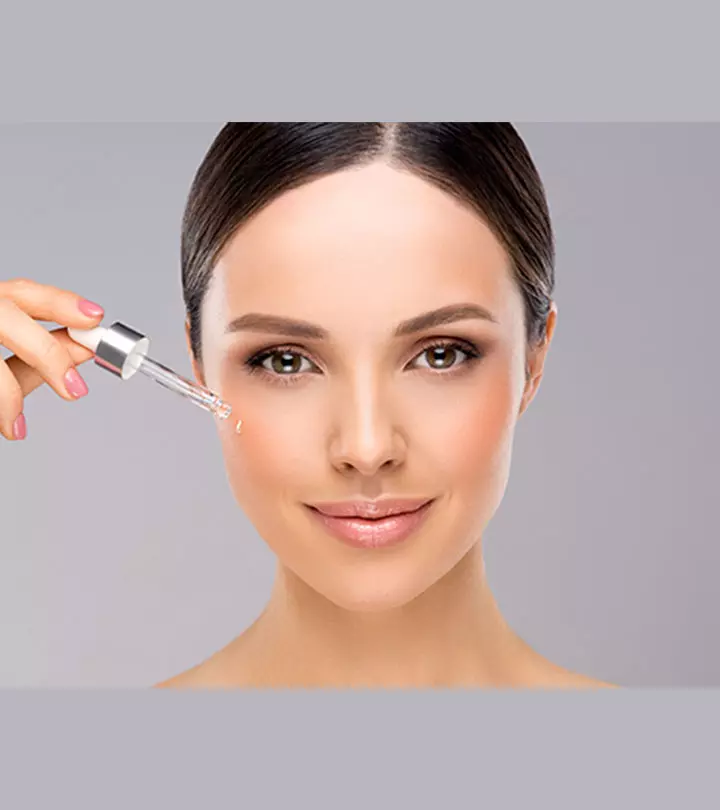
Image: ShutterStock
Polyhydroxy acids (PHAs) are mild chemical exfoliants that nourish your delicate skin. Polyhydroxy acids for skin are popular among those with sensitive and breakout-prone skin. They are mild and help exfoliate the skin without causing irritation and damage.
Any skin care routine is incomplete without exfoliation. And PHAs are best for those who cannot tolerate other chemical exfoliants like alpha-hydroxy acids. They help remove the dead skin and help improve your skin texture.
However, people still have a double mind regarding the safety of polyhydroxy acids. Are you wondering the same? We can help. This article discusses everything you need to know about polyhydroxy acids for skin, their benefits, and how to use them. Keep reading.
 Know Your Ingredient: Polyhydroxy Acids
Know Your Ingredient: Polyhydroxy AcidsWhat Is It?
A clear gel that works as a gentle exfoliant for all skin types.
What Are Its Benefits?
It removes excess sebum and dead skin cells from your skin gently, hydrates and protects it from sun damage, and helps reverse signs of aging.
Who Can Use It?
Anyone except those with extremely sensitive skin and specific skin conditions like eczema or rosacea.
How Often?
It is suitable for daily use on most skin types. However, you must use it 2 to 3 times a week if you have sensitive skin.
Caution
PHAs may cause breakouts during the process of purging.
In This Article
What Are Polyhydroxy Acids (PHAs)?
Polyhydroxy acids (PHAs) are a new generation of alpha hydroxy acids (AHAs) that have been used since the 1970s for their skin-smoothing, exfoliating, and anti-aging effects. The most common PHAs are gluconolactone, galactose, and lactobionic acid.
While PHAs work similarly to AHAs, they do not cause any sensory irritation responses as some AHAs do. Products containing PHAs are known to be compatible with Caucasian, African American, Hispanic, and Asian skin (1).
Take a look at the various benefits of PHAs below.
Key Takeaways
- Polyhydroxy acids (PHAs) are a group of mild and effective chemical exfoliants.
- They also act as humectants, protect against sun damage, and fight free radicals.
- Galactose, gluconolactone, and lactobionic acid are the most used PHAs.
- PHAs can be included in your skin care regime twice or thrice a week.
6 Benefits Of PHAs
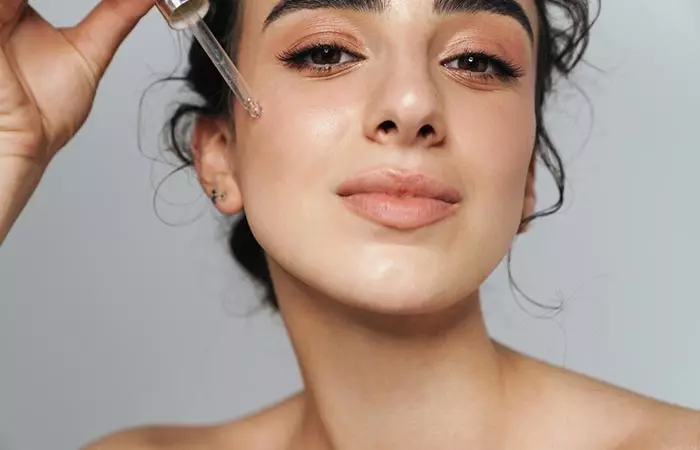
PHAs are a very gentle category of acids that can be used by anyone irrespective of their skin type. Here are some of their best-known benefits:
1. Exfoliate Gently
PHAs are very mild on the skin. These acids gently slough off the dead skin cells and help revive dull-looking skin. They can improve skin texture and offer anti-aging benefits without causing any harm (2).
2. Fight Against Free Radicals
Some PHAs are known to have antioxidant properties that help your skin fight against free radicals. Free radicals break your skin’s collagen down and lead to wrinkles, dryness, and sensitivity. By acting as free radical scavengers, these acids protect your skin from damage and delay the signs of aging (3).
3. May Improve The Efficacy Of Other Ingredients
PHAs,
such as gluconolactone or lactobionic acid, can work well in combination with retinoli A form of retinoid derived from Vitamin A that possesses anti-aging, acne-clearing, and skin-rejuvenating properties. to make your skin smoother and plumper. Combining them with hydroquinonei A skin-lightening chemical that bleaches your skin by reducing the number of melanocytes (cells that make melanin) in your body. can also make anti-aging products more effective (1). However, more human trials are needed to support these claims.
4. Acts As A Humectant
PHAs are also known for their humectant and moisturizing properties. They enhance the skin’s stratum corneum (outermost skin layer) barrier function. They keep moisture sealed in your skin and keep it hydrated for long (1).
5. May Protect Against Sun Damage
Some PHAs, such as gluconolactone, may have the potential to protect skin against UV radiation. Preliminary research in this area shows promising results (2). However, further research is needed to prove these claims.
6. Suitable For Individuals With Specific Skin Conditions
Even though exfoliation is an essential part of skincare, many people can’t enjoy its benefits due to preexisting skin conditions like eczema or rosaceai An inflammatory skin condition that typically affects the face and causes redness and frequently tiny, red bumps that are filled with pus. . However, PHAs are so mild and nourishing that they are compatible even with chemically sensitive skin (1).
AHAs and BHAs are also popular exfoliants like PHAs. But how are they different from each other? Read on to learn about the differences between AHAs Vs. BHAs and how they differ from PHAs.
AHAs Vs. BHAs Vs. PHAs
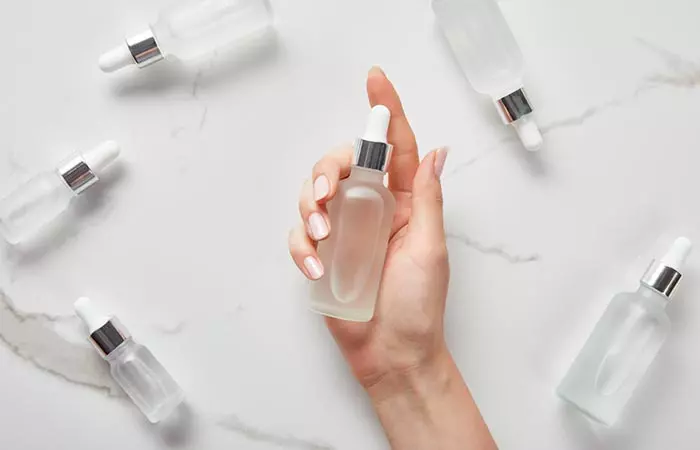
1. Alpha-Hydroxy Acids (AHAs)
AHAs are organic acids used as superficial peeling agents for many years. Glycolic acid, lactic acid, malic acid, tartaric acid, and citric acid are among the most commonly used AHAs. They are water-soluble and exfoliate the skin through a process known as apoptosis.
Exfoliating with AHAs makes the skin more sensitive to sun damage. AHAs may also cause redness, burning, and swelling (3). These days AHAs like glycolic acid and lactic acid are used as prominent chemical peels for gentle exfoliation. One of the key benefits of alpha hydroxy acid for your skin is that it gives you a brighter complexion. Additionally, it also promotes smoother and clearer skin through exfoliation. AHAs may also have anti-aging properties, though this claim is yet to be fully proven.
 Trivia
Trivia2. Beta-Hydroxy Acids (BHAs)
BHAs are oil-soluble acids often used in cosmetic preparations as exfoliants. They work on the skin’s surface and penetrate the skin cells to slough dead skin cells and dissolve excess sebum. They also decongest pores. Salicylic acid is the most commonly used BHA.
BHAs (beta hydroxy acids) are best suited for those with oily skin, acne, and combination skin types. They also work great for those prone to blackheads, whiteheads, enlarged pores, and breakouts as they can easily penetrate blocked pores. BHAs are also thought to reduce the appearance of fine lines and wrinkles, especially when moisturizing the skin is paired with these exfoliating chemicals.
BHAs are generally considered gentler than AHAs and don’t irritate the skin upon use. They are recommended to be used with a sunscreen (4).
3. Polyhydroxy Acids (PHAs)
PHAs are considered the gentlest among the three classes of exfoliants. They have larger molecular structures compared to AHAs and cannot penetrate the skin too deeply. They also work slower than AHAs, and, therefore, are not as hard on the skin. Their mildness makes them suitable for all skin types, including skin that is chemically sensitive.
PHAs work by exfoliating dead skin cells and excess debris on the skin surface, and expose the firmer and suppler skin underneath. They also moisturize as they exfoliate, giving your skin a softer, smoother finish. They are also believed to promote cell renewal and rejuvenation.
PHAs are the gentlest of the lot. But are they totally safe? Or do they have any adverse effects?
Do PHAs Have Any Side Effects?
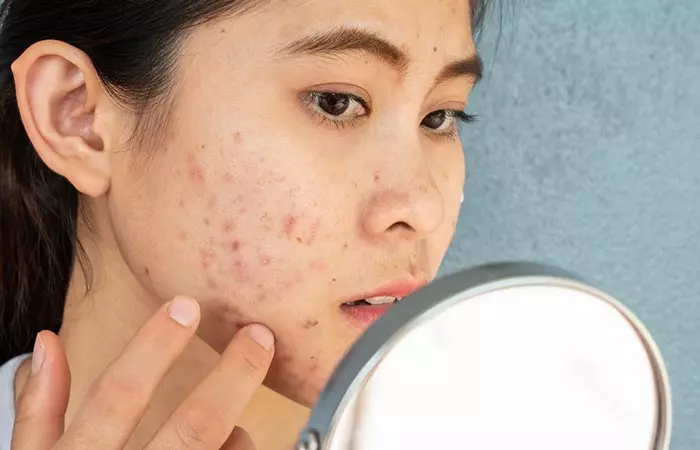
PHAs are considered safe for most skin types and generally do not result in side effects. However, if you have extremely sensitive skin that tends to break out at the slightest pretext, you should exercise caution while using PHAs. Ultra-sensitive skin can react to any new skin care product. Hence, it is important to start slowly.
One probable side effect of using any exfoliant is purging. When you add a new product to your skin care regime, your skin might react by breaking out. The removal of the dead skin cells and sebum on the surface of the skin may cause the trapped sebum under the debris to rise to the surface and cause a breakout.
However, this doesn’t have to be a cause for concern. Purging is a beneficial process that helps clear the skin. Don’t panic if PHAs cause your skin to purge. Just continue to use the product. Your skin should clear up on its own in about 4 to 6 weeks, and you will eventually get smoother skin.
Using PHAs the right way can give you great results. Here’s how.
How To Use PHAs For Skin
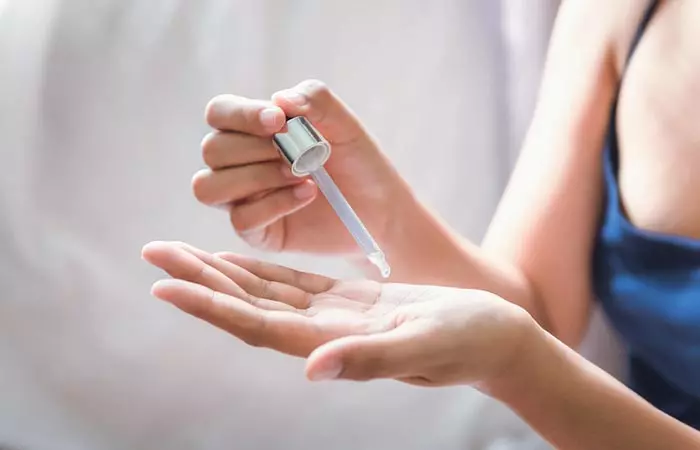
Using an exfoliant with PHAs helps gently rub the dead skin cells off the skin and restores the skin’s natural beauty. Here is the right way to use these acids:
- Remove all traces of makeup and wash your face with fresh water and a mild facial cleanser. Pat dry.
- Dampen a cotton pad with some toner and apply it all over your face and neck, avoiding the lips and the delicate areas around your eyes.
- Take a small amount of the gel or cream on your fingertips and apply it all over your face. If your product is in a liquid form, you can apply it with a cotton pad.
- Wait for a few seconds and allow it to dry.
- Continue with your skin care regime and apply other products in the order you usually follow.
While PHAs are known to be gentle, it is always a good idea to start slow with chemical exfoliants. Ensure checking the ingredients section to learn about the concentration of PHAs in the product and start with a low concentration, gradually shifting to higher concentration formulas. Begin by doing a patch test of the product on a small region on your arm or leg and leave it on for a few hours. Discontinue if you experience any allergic reaction or discomfort. But if there is no reaction, you may start using it on your facial skin.
All facial acids can potentially cause side effects when your skin is exposed to the sun. Hence, ensure you always use sunscreen along with PHAs in your daily routine.
Now check out the various products that contain this acid.
Polyhydroxy Acid Products
If you are confused and don’t know which product contains polyhydroxy acid or if you are having trouble finding the right product that would complement your skin care regimen, take a look below to determine the product that will suit your needs.
- Exfoliating Toners: PHA-infused toners may help to gently remove dead skin cells, unclog pores, and promote a smoother, more even skin texture without causing significant irritation.
- Serums And Essences: PHA-based serums and essences work to refine skin texture, improve overall skin tone, and enhance skin hydration.
- Moisturizers And Creams: PHA-containing moisturizers and creams hydrate and strengthen the skin barrier.
- Masks: PHA masks provide a more intensive exfoliation treatment, promoting skin renewal and improving overall skin radiance without causing redness or irritation.
Although PHAs are very mild, you should exercise caution when it comes to mixing them with other active ingredients. Keep reading to know more.
What Should You Not Mix With PHAs?
If you read the ingredients lists of commercial exfoliant products, you may see that PHAs are often used with AHAs and BHAs. While oily skin prone to acne is likely to tolerate these three acids, other skin types may react.
Even though PHAs are quite gentle, combining them with other chemical exfoliants can lead to skin irritation. Thus, to be on the safer side, consider using products containing only one type of exfoliating acid. Also, choose products only with PHAs if you have ultra-sensitive skin prone to eczema, dryness, or rosaceai An inflammatory skin condition that typically affects the face and causes redness and frequently tiny, red bumps that are filled with pus. .
Several types of PHAs are used in beauty care products. But which ones suit your skin the best? Let’s find out.
What Types Of PHAs Are The Best?

1. Gluconolactone
Gluconolactone is one of the most popular ingredients in facial products for sensitive skin. It is known for its gentle exfoliating effects. It also serves as a humectant and seals skin moisture. It is known to have antioxidant properties and may even protect your skin from UV damage (2).
2. Lactobionic Acid
Lactobionic acid is an iodized form of lactose that is derived from milk sugars. Anecdotal evidence suggests that it can fight the signs of aging, unclog pores, and even out one’s skin tone. It is also said to prevent the degradation of collagen and keep your skin looking younger. However, more empirical studies are needed to confirm its efficacy as an anti-aging ingredient.
3. Galactose
Galactose is also derived from milk sugars. It is less commonly used than the above two PHAs. It is said to be a gentle exfoliant. It moisturizes your skin while sloughing away the dead skin cells from your skin surface. Anecdotal evidence suggests that galactose may help reduce hyperpigmentation and the appearance of dark spots.
 Did You Know?
Did You Know?How Often Can You Use PHAs?
PHAs are generally considered gentle enough for daily use on most skin types. However, those with sensitive skin are recommended to use them 2 to 3 times a week. You may gradually start using them daily.
Experiment with different products to find out what works best for you. Serums with PHAs are a popular choice for those who have never used the ingredient before. You can start using them daily once your skin gets used to the acids.
Is It Safe To Use PHAs With Ingredients Like Vitamin C Or Retinol?
Some beauty YouTubers and bloggers believe it is safe to use PHAs in combination with vitamin C or retinoli A form of retinoid derived from Vitamin A that possesses anti-aging, acne-clearing, and skin-rejuvenating properties. . A few beauty influencers even recommend using it with retinoli A form of retinoid derived from Vitamin A that possesses anti-aging, acne-clearing, and skin-rejuvenating properties. for best results.
However, on the contrary, some beauticians warn against mixing PHAs with retinoli A form of retinoid derived from Vitamin A that possesses anti-aging, acne-clearing, and skin-rejuvenating properties. or vitamin C due to potential skin irritation.
There is no scientific evidence to back either of the claims. Hence, run a patch test of these combinations to see how your skin reacts.
Infographic: 6 Tips To Use Polyhydroxy Acids Safely
Polyhydroxy acids or PHAs are the mildest chemical exfoliants and are well tolerated by people with sensitive skin. When used properly and combined with the right skin care ingredients and treatments, PHAs can address multiple skin issues, from pigmentation to acne. The infographic below gives you a snapshot of the right way to use them. Take a look.

Illustration: StyleCraze Design Team
Summing It Up
Polyhydroxy acids are newer and gentler versions of alpha-hydroxy acids (AHAs) popular among people with sensitive skin and acne. Their moisturizing and antioxidant properties slow down aging, exfoliate your skin gently and protect your skin from damage, making them the perfect addition to your skincare routine. Make sure you remove all makeup and clean your face before applying polyhydroxy acids to your skin. While polyhydroxy acids for your skin are safe for use and suitable for all skin types, consult a doctor immediately if you develop any adverse reactions. For a comprehensive understanding of how these acids work, keep a skin care acids guide handy.
Frequently Asked Questions
Can PHAs be combined with other skin care ingredients?
Yes, PHAs can be combined with other skin care ingredients like niacinamide, hyaluronic acid, and peptides. Their gentle nature makes them suitable for layering, enhancing hydration, and exfoliating without causing irritation.
Is polyhydroxy acid good for dry skin?
Yes, polyhydroxy acid is good for dry skin. PHAs act as humectants that attract water and moisturize the skin.
Is hyaluronic acid a polyhydroxy acid?
Hyaluronic acid and polyhydroxy acid are not the same and they have different properties. Hyaluronic acid is naturally produced by your body. Whereas polyhydroxy acid is a chemical exfoliant that helps improve skin elasticity and slows down skin aging.
Is PHA better than BHA?
PHAs are suitable for all skin types, including eczema and rosaceai An inflammatory skin condition that typically affects the face and causes redness and frequently tiny, red bumps that are filled with pus. skin conditions, and are a lot gentler on the skin. Whereas BHAs are suitable for oily and acne-prone skin.
Can PHA be used with niacinamide?
Yes. PHA can be used with niacinamide. However, for optimal results, layer them as separate steps rather than mixing these formulas.
Illustration: Benefits Of Polyhydroxy Acids For Skin | Types & How To Use
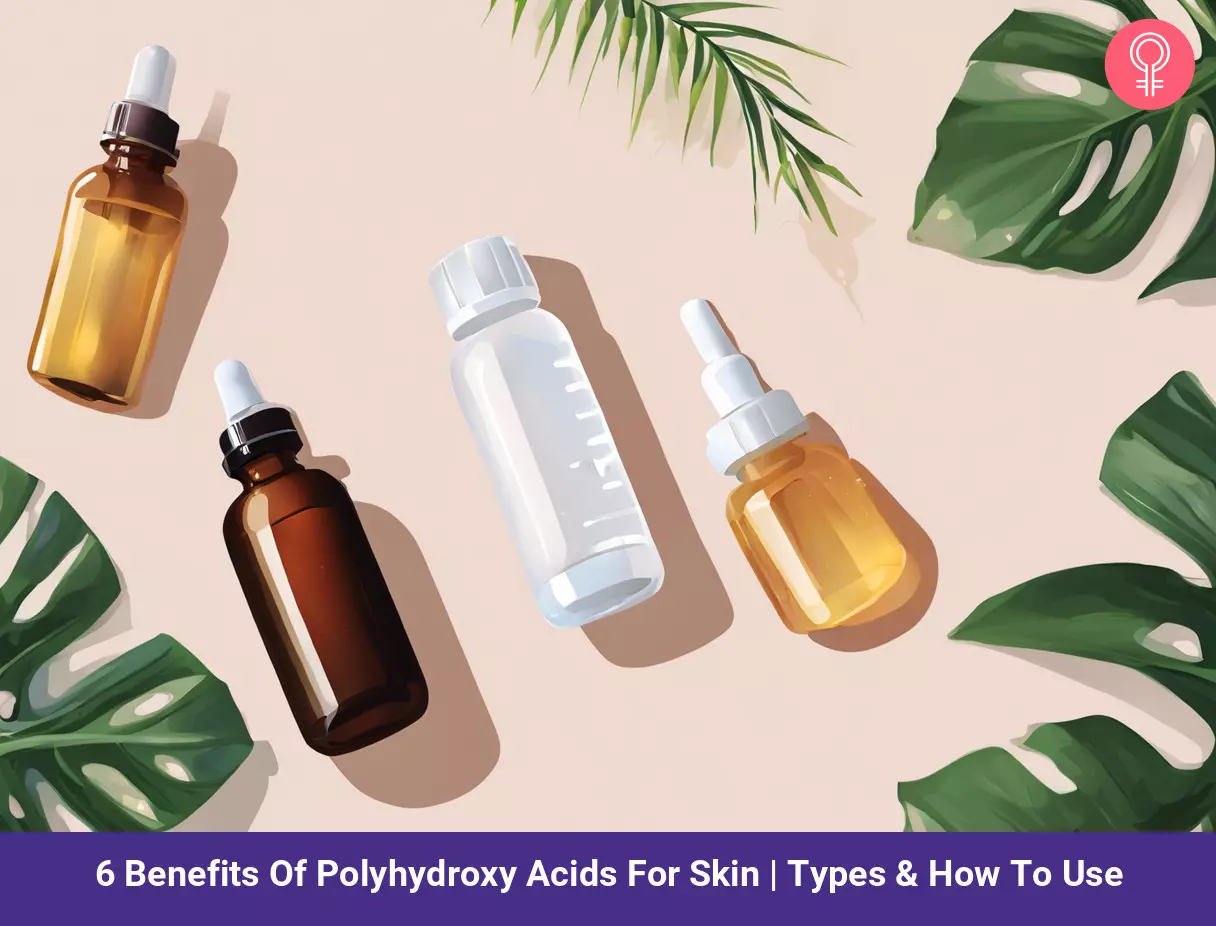
Image: Stable Diffusion/StyleCraze Design Team
Learn about polyhydroxy acid, a powerful skincare ingredient that helps reduce wrinkles and improve skin texture. Get the facts and see the results with this video.
References
Articles on StyleCraze are backed by verified information from peer-reviewed and academic research papers, reputed organizations, research institutions, and medical associations to ensure accuracy and relevance. Read our editorial policy to learn more.
- The use of polyhydroxy acids (PHAs) in photoaged skin
https://pubmed.ncbi.nlm.nih.gov/15002656/ - A polyhydroxy acid skin care regimen provides antiaging effects comparable to an alpha-hydroxyacid regimen
https://pubmed.ncbi.nlm.nih.gov/15002657/ - The polyhydroxy acid gluconolactone protects against ultraviolet radiation in an in vitro model of cutaneous photoaging
https://pubmed.ncbi.nlm.nih.gov/14756648/ - Beta Hydroxy Acids
https://www.fda.gov/cosmetics/cosmetic-ingredients/beta-hydroxy-acids
Read full bio of Dr Ashok Gund
Read full bio of Arshiya Syeda
Read full bio of Ramona Sinha
Read full bio of Monomita Chakraborty






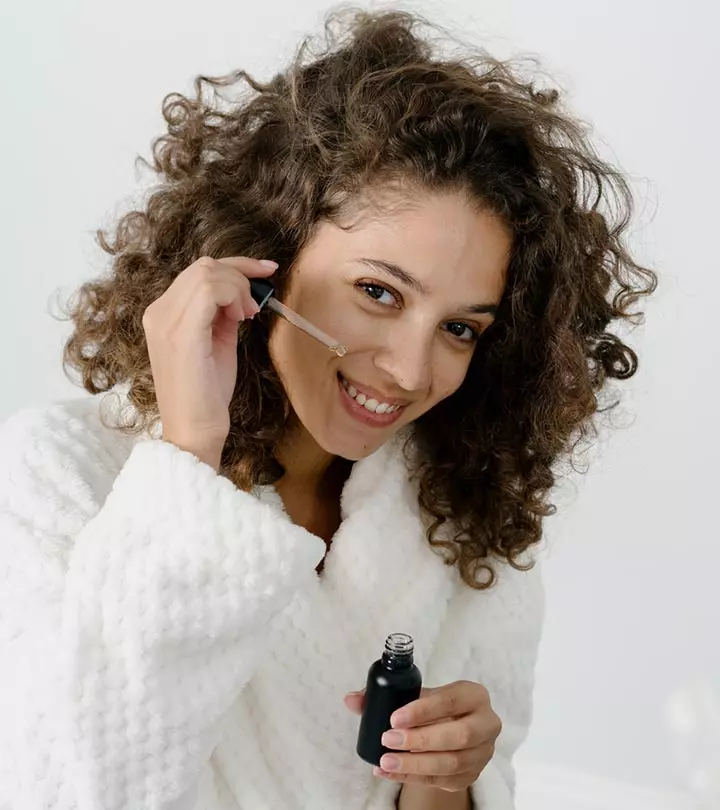
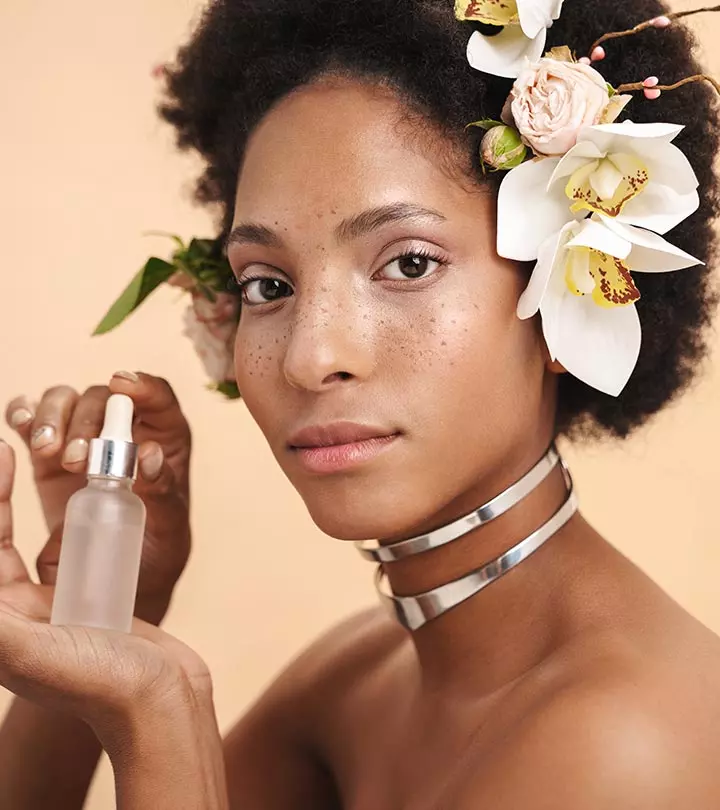
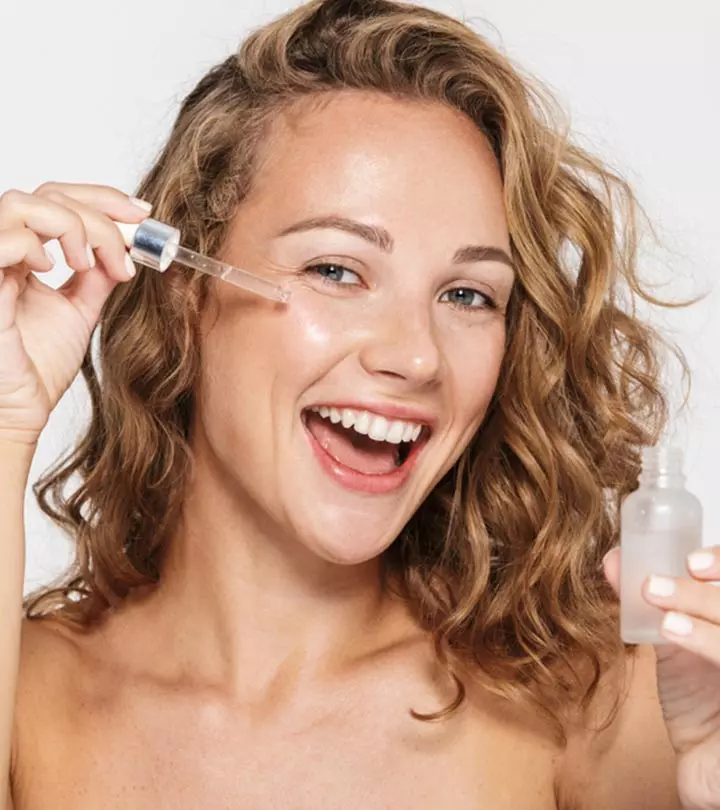
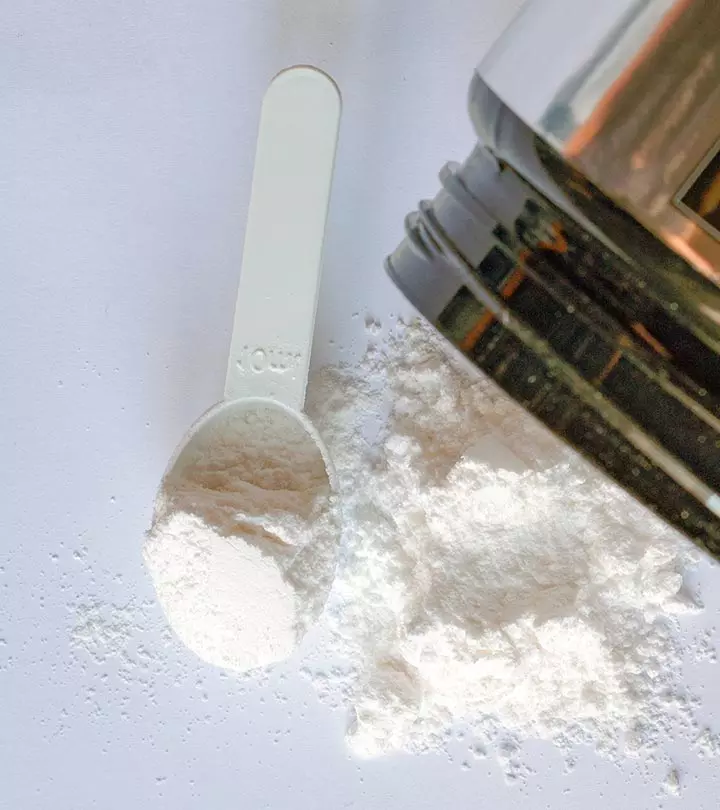

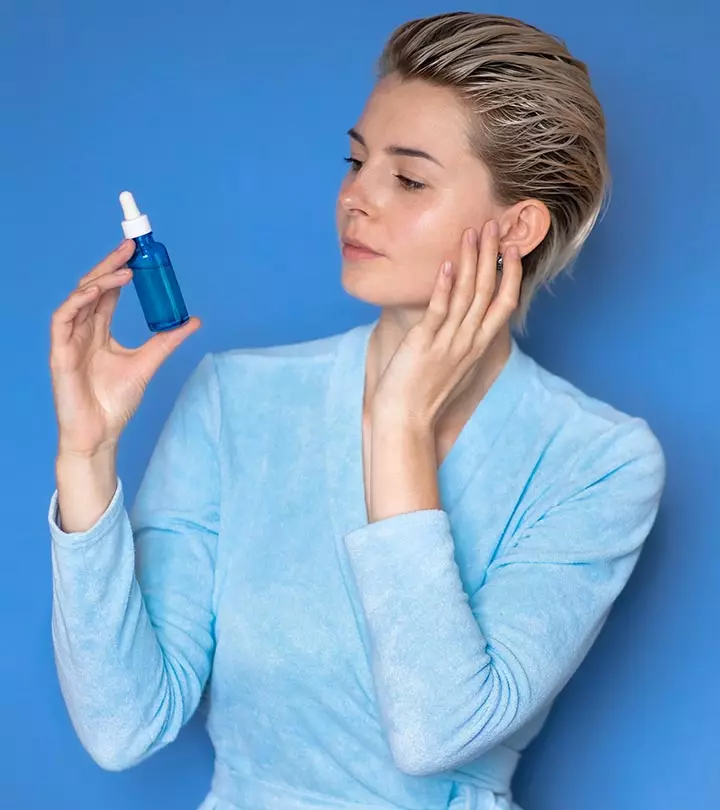
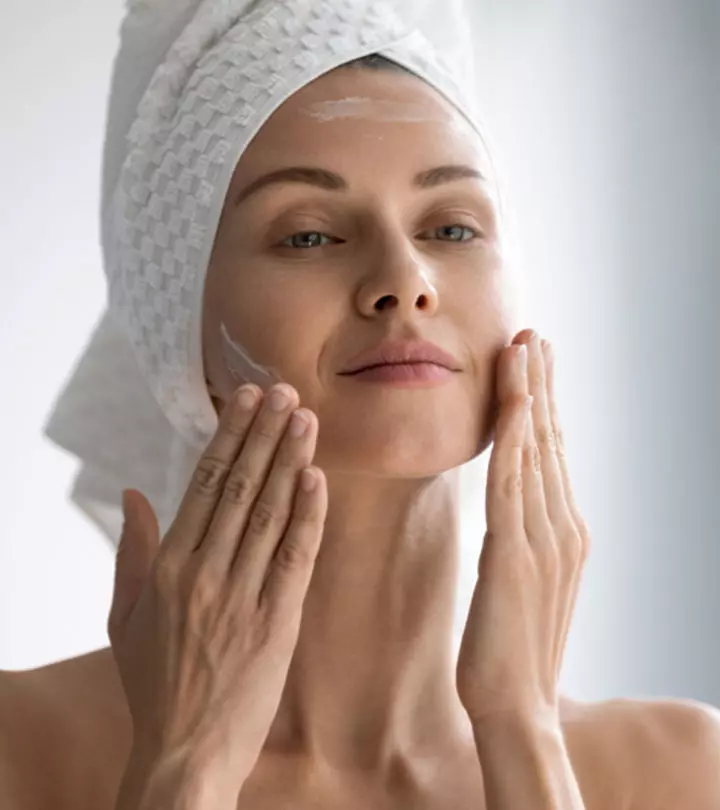

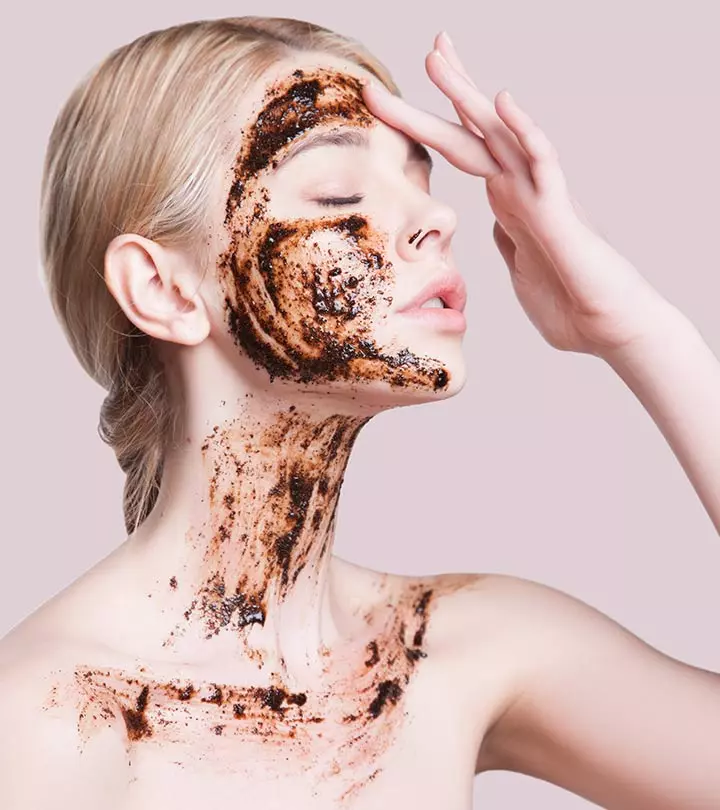

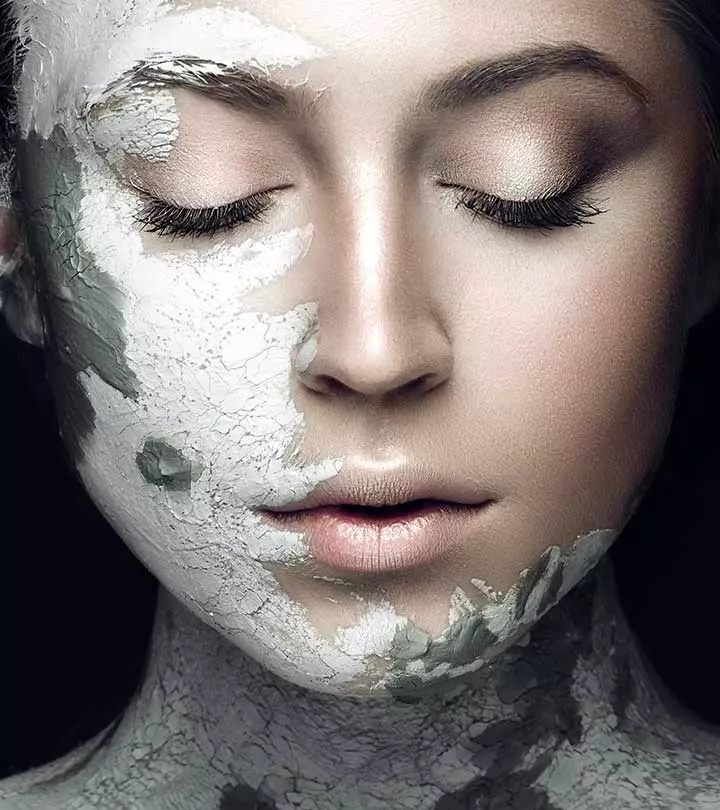
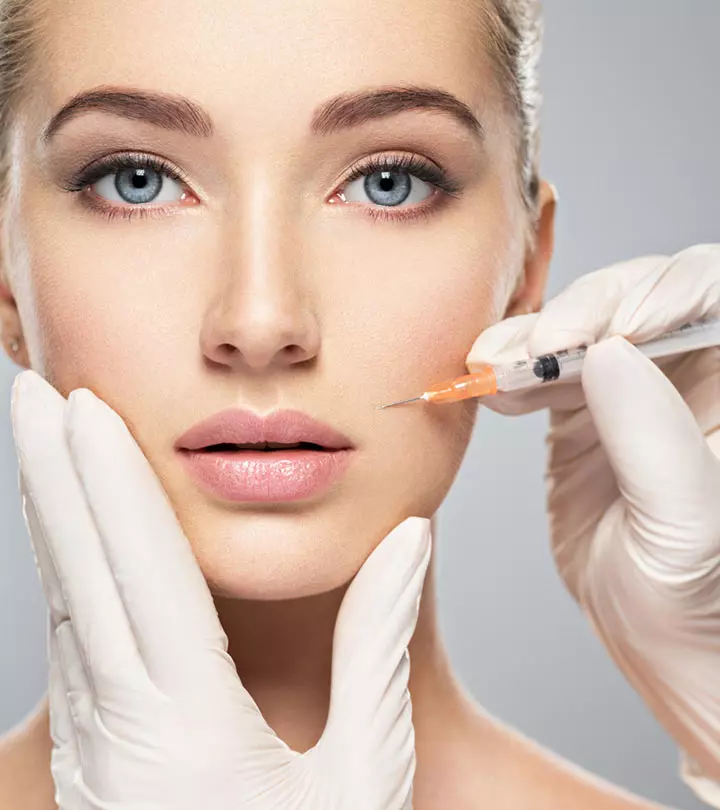

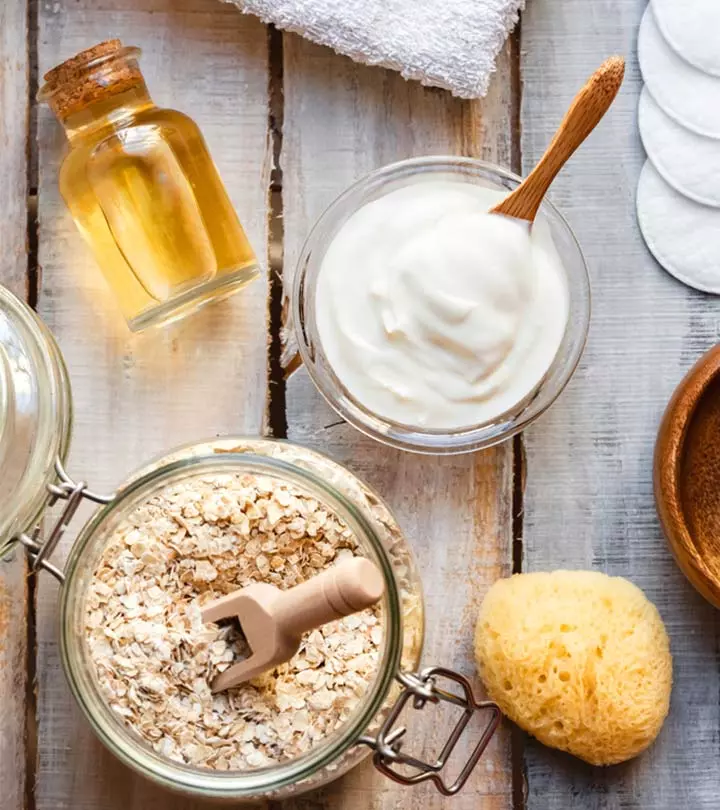
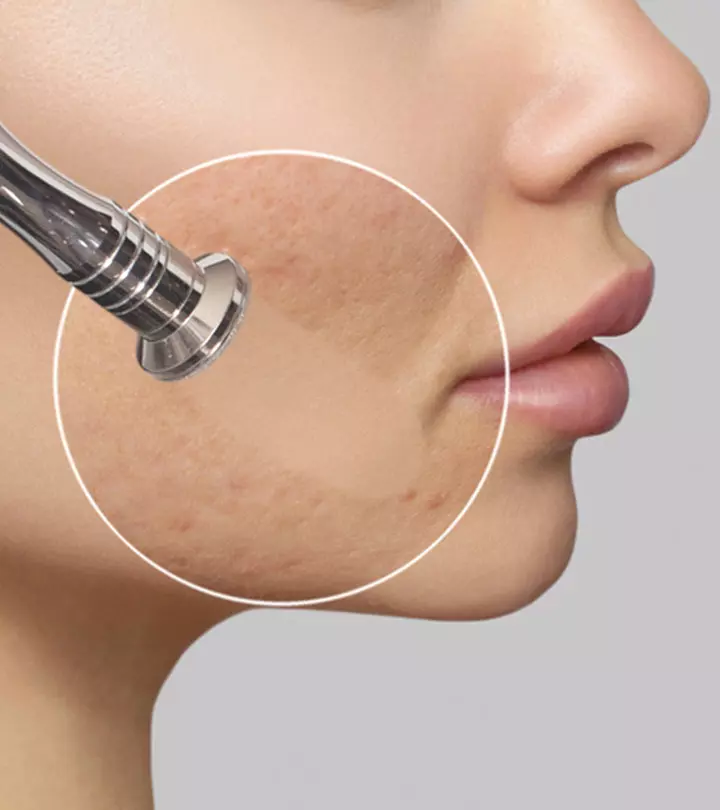



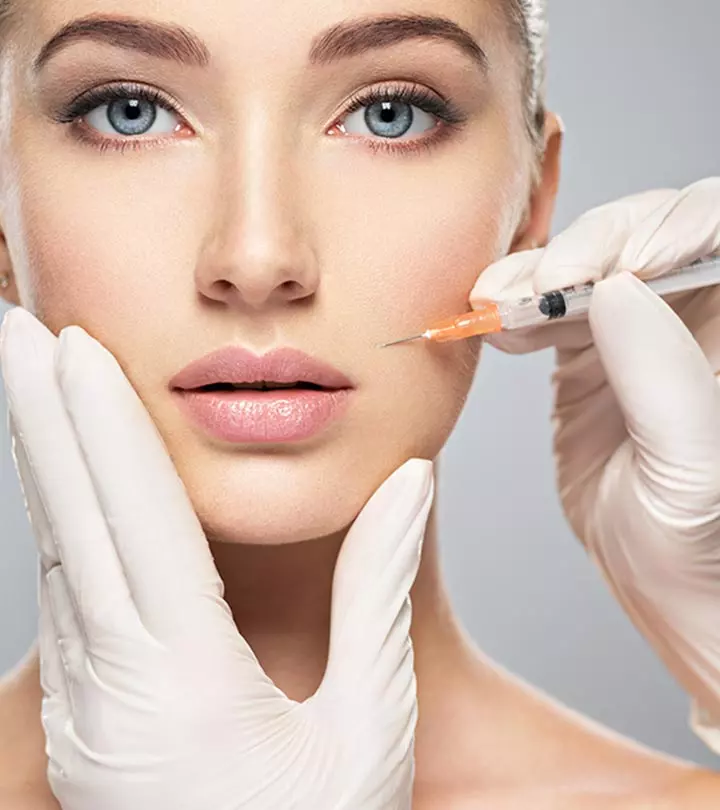
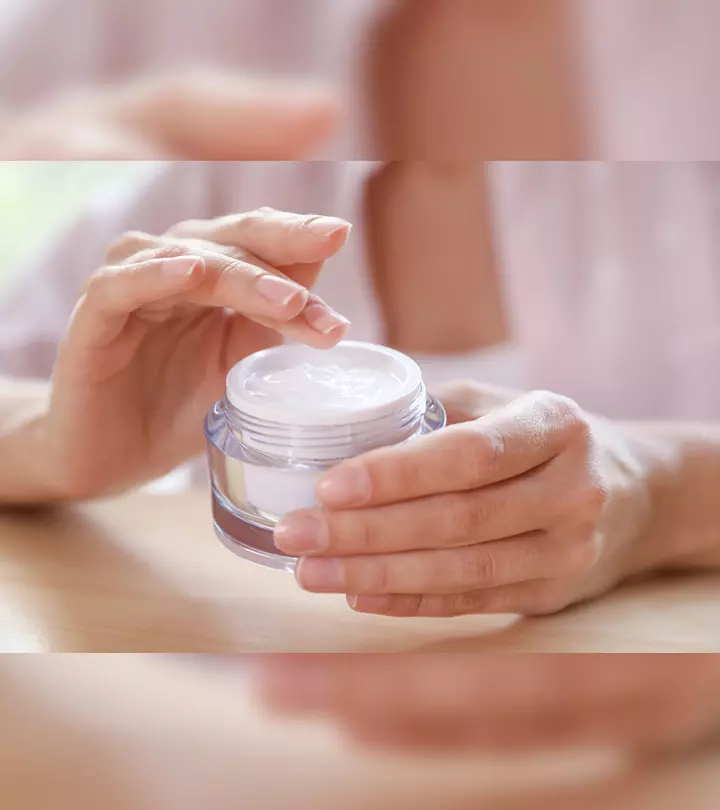
Community Experiences
Join the conversation and become a part of our empowering community! Share your stories, experiences, and insights to connect with other beauty, lifestyle, and health enthusiasts.